The Last Story Review
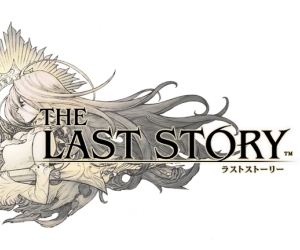 Game: The Last Story
Game: The Last Story
Developer: Mistwalker, AQ Interactive
Publisher: Nintendo
Available on: Nintendo Wii Only
The Wii has been creating a lot of stir lately with the large number of RPG’s that has headed toward its clutches. The last big one being Xenoblade Chronicles, which allowed people to see the possibilities the Wii held, and that not every title had to be shovelware with a very low chance of actually entertaining the mainstream audience that still held hope for the console.
The next similar game to grace the Wii’s presence, hoping to achieve the same results, is The Last Story, an RPG Epic created by Hironobu Sakaguchi, world famous for creating the Final Fantasy franchise. Since as early as 2009, Sakaguchi and his team in Mistwalker have been working on The Last Story which, despite its leading name, isn’t Sakaguchi’s last game. That being said, he has said that the work gone into The Last Story was approached as if it was the teams last game. A noble approach, and an angle that could make or break the development cycle, The Last Story definitely brings a lot of things to the table. However not all of it is exactly as it seems.
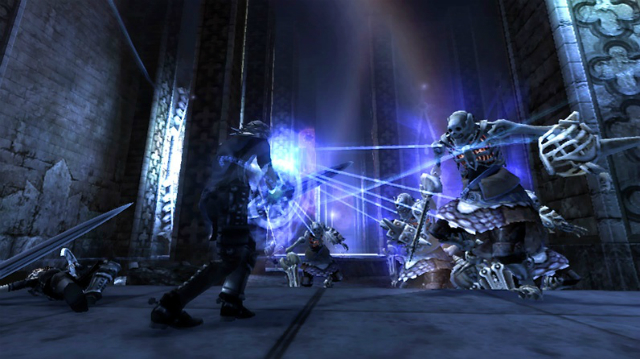
STORY: The Last Story presents us with a fantasy world beyond the realms of possibility, filled with a large variety of creatures, beasts and magic. Any gamer knows the routine, and will immediately feel at home in the game’s environment. We follow a group of mercenaries who have been through rough times. Playing as Zael, the player will unravel the story behind him and his friends and how they wound up on Lazulis Island. Along with Zael are his friends, Syrenne; the beautiful drunkard, Dagran; the mercenary leader, Yurick; the closed off mage and Lowell; the flirtatious sorcerer. Together, they go on adventures that will steadily reveal the true intentions and hidden mysteries of the island.
At the very beginning, Zael nearly loses Syrenne in a fight and becomes depressed at the thought of being alone. After a swift flashback of Zael watching his mother dying, these thoughts overwhelm him, and a voice enters his head, telling him that it too feels Zael’s loneliness. Zael finds himself surrounded by a blue light and begins to absorb its power, gaining runic marks on his hand and the ability to make creatures focus on him, whilst also being able to revive Syrenne. While him and his team members aren’t entirely sure of what’s happened, they utilise the power to escape the caverns and the dangerous beasts it holds.
Unfortunately, like any RPG Epic, revealing any part of the story will eventually lead to spoilers, so I’ll try my best to avoid it. However, The Last Story really offers a deep and rich story which focuses more on character relationships than the actual flow of events. Through simple transactions of dialogue you learn what each of your team mates have been through, the backgrounds they come from, and where they want to head. Whilst this does provide rich storytelling, a lot of the dialogue and interactions with characters is very easy to skip, whether on accident, or by becoming bored and opting for the action instead. Those wanting a detailed storyline will look to talk to everyone possible, whilst those who find that tedious can skip it all. Both methods are nice to have, choosing to skip the dialogues, for whatever reason, will result in an incredibly stunted play through, and may leave open gaps as to who characters are and why they pursue their paths so religiously.
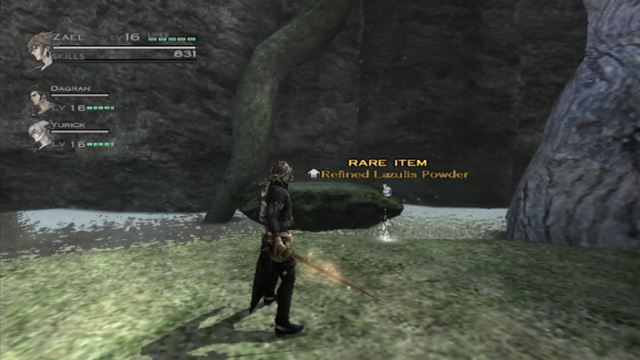
GRAPHICS: Now would be as good a time as ever to remind you that The Last Story features exclusively on the Wii, and you don’t have to be a games buff to know the Wii doesn’t provide the most graphically enhancing experiences. That being said, graphics shouldn’t be what holds a game together, and that certainly is the case in The Last Story; to an extent. If you’re going by first impressions, then The Last Story may leave you feeling betrayed. Starting in a dark cave, the game limits itself with an incredibly similar style, not really varying from one rocky environment to the next. Give it time, and that will soon change. Fighting through the dangers that the cave holds will also allow you to fight through the boring scenery into a luscious and vibrant world. With detailed backdrops, The Last Story really paints a picture of the world around you.
The unfortunate circumstance is that it all feels far too familiar. From the dangerous dungeons to the noble and proud streets of the city, The Last Story doesn’t stand out from the crowd. It feels like any town you’ve seen in any RPG before it, and doesn’t even attempt to make itself unique. That isn’t to say the graphics are bad though, just not incredibly intuitive. For those who like to feel at home, the buildings, both the interior and exterior, will have you feeling like you’re well planted into a fantasy setting. Just don’t be hoping for a brand new look on a genre full of look-a-likes, or you may be disappointed. One added problem to the game is that the colour pallet is incredibly similar, and it will be incredibly hard to decipher one street from another, or one forest pathway from the next. While the separate areas all differ greatly, you can find yourself becoming bored within the same location quite easily.
SOUND: While the graphics may leave a little to be desired, the music within the game will more than make up for it. Nobuo Uematsu has joined the The Last Story team, scoring its music to an incredible extent. With a soundtrack to die for, every cavern and town will leave you feeling either afraid, safe or a mix of the two as Uematsu captures the very essence of emotion within his music. The title screen alone made me excited to play the game, and to press the start button. Battle music keeps you on edge, and the different style ease in and out of each other with little to no awkward phase.
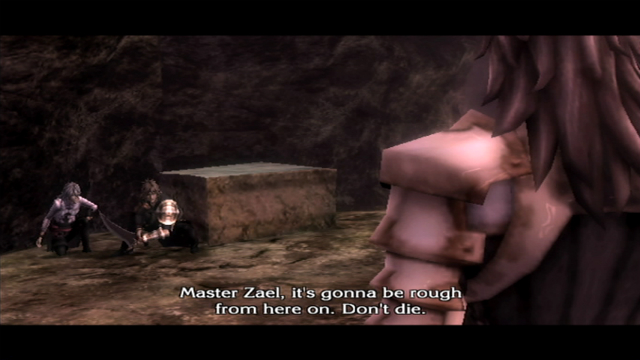
It’s not something that anyone should be surprised about, however. Uematsu has been scoring music along side Sakaguchi for many years now, and the two are in such sync that it’s in these games that you find that rare juxtaposition of gameplay and sound that fit hand in hand perfectly, rather than the latter being an obvious added after thought. Uematsu’s job has been fulfilled perfectly. The voice acting, however, is incredibly…odd. The heavy English vernacular that has obviously been made in an attempt to engage with an English market just doesn’t work for me. Thick accents that feature within the game sit awkwardly alongside the genre, leaving characters looking like pastiches of what they really should be. Although I do like to see games taking a risk and trying to change things up, this didn’t work in Xenoblade Chronicles and it doesn’t work here either. While the American accent does the translation job a certain amount of justice, I would much rather prefer to play a subtitled Japanese version than sit through the excruciating pains of the English attempt.
GAMEPLAY: Voice acting aside, the game plays rather well, taking a standard approach to what the RPG genre usually offers. Keeping in line with the more preferred method of intergrated open world battles, exploration and fighting go hand in hand, with some rather un-inconspicuous transition phases. The battle system took a while for me to get my head around. Instead of being the main leader, and usually the sole damage dealer, you find yourself playing the commander role; very rarely are you required to rush in and deal damage. Instead you engage enemies in an attempt to allow your team mates time to charge powerful spells or initiate large combos to take out your opponent. This means you’ll be more focused on dodging and rolling than fighting while on the battlefield. The tactical mind may be dusty, but you’ll certainly need to wipe it down and give it a shine, because the run’n’gun technique will not help you here. Rushing towards your opponent will lead to a very swift death.
The learning curve is very steep as well, the tactical thinking appearing in the very beginning of the game, rather than easing people into the role. You’ll be expected to command your team mates the moment Zael acquires the power to do so. One of the more impressive features of the game focuses around dealing damage to the surrounding environment to wipe out enemies instead of the enemies directly. You may be faced with a seemingly impossible situation, with enemies way too far out of reach, or monsters too big to deal a sufficient amount of damage to kill. This is where you’ll look to the area around you to find something that will keep you ahead in battle. A nice feature without a doubt, but they really want you to know it. Starting most battles that will require environmental input will usually have the game obviously pointing it out to you. I was looking forward to figuring out what I could do myself, until one of your team mates point out obviously precariously placed structures with weak foundations that are just dying to fall down. All these commands are input through the Wii controller, aiming at the screen to command team mates to attack enemies, or your mages to take down structures. This seems to be the only Wii function included within the game. I played using a classic controller, as I found it more accurate in the heat of battle than pointing at the screen, and as such it feels that the game really stunted itself by being a Wii exclusive in this respect.
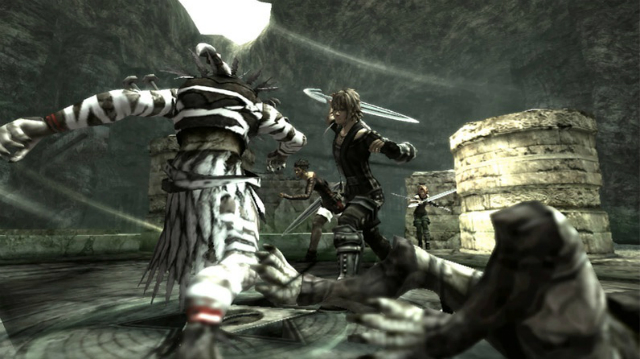
LONGEVITY: The beauty of the epic RPG is that it involves a long term commitment. RPG’s of this calibre don’t want one night stands, you’re either in for the long haul, or you need to find another mistress. The Last Story’s campaign alone will keep any epic-chaser amused for hours, even more so if you pursue the interweaving, deep relationships that make the current day RPG what they are. However, for those of you who speed through the game, it doesn’t fail to bring you something else. The Last Story focuses on a heavy multiplayer mode as well, something many RPG’s haven’t done.
With two modes, you can find yourself in the Raid section of multiplayer, where you take your own character online and team up with a number of other adventure seekers to work together and take down powerful enemies. Anything you earn will be taken back offline, and you can then use it to continue your journey. You may also find yourself in the Versus area. Taking the deathmatch approach, Versus will pit you against other players in a game of points. Score points by killing opponents, and lose them by being killed. Have the most points at the end of a game and you’ll be crowned the winner. However, to keep things fair you’ll chose from a variety of pre-determined characters, and won’t take anything back to your campaign. An interesting approach to the genre, and oddly enough it works. I found myself engrossed in a fantasy multiplayer, something only the likes of Monster Hunter has really touched upon before. I hope it serves as a platform for other developers who will pursue a similar style.
VERDICT: The Last Story had me tearing my hair out trying to come up with a final verdict. Its roots are there, and it’s clear to see that it fits in snugly with the other RPG’s. However it tries to subtly differ itself from the pack with unneeded features and gimmicky add-ons, but that doesn’t take away from the fact a strong, deep, involving RPG wonder lies beneath glitter and tassles, and it isn’t too hard to find it either. The Last Story is a good game, but it definitely could have done without a few of the extra bells and whistles stuck on. That and any other console other than the Wii would have increased this games potential tenfold.





